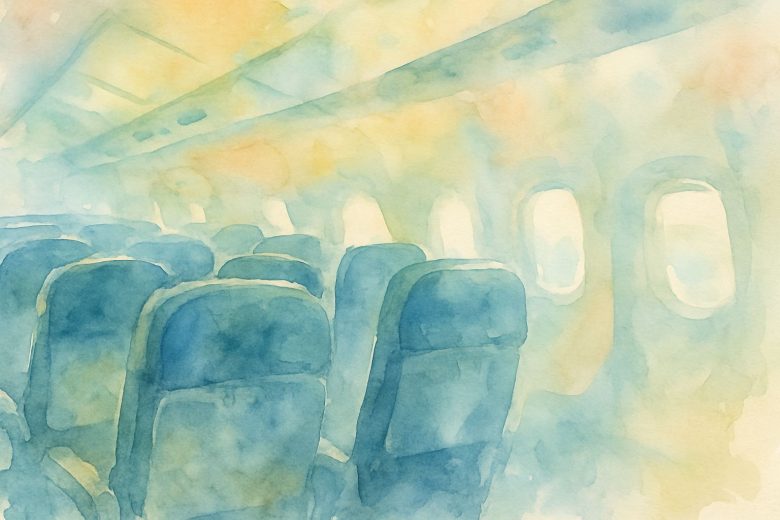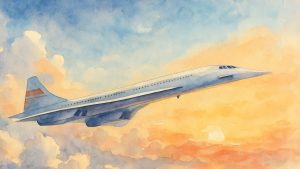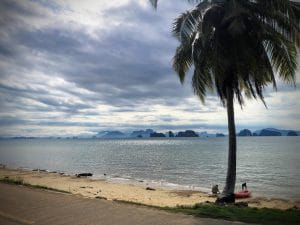I am sure there have been numerous blogs written about this topic, and everyone has a different opinion about it. Here is my two cents after traveling around the world, and consuming an unhealthy amount of nerdy aviation related information:
What to Wear
1. 100% cotton top and bottom. Ideally thicker cottons like gaberdine or denim. This means, no synthetic workout outfits, no shorts, no pyjamas, no half-sleeves. It has to be comfortable, yet strong and semi-formal. Pockets are important, the more pockets the better. Never skip your underwear.
2. If weather permits, wear a light jacket, ideally cotton or wool-based material. No synthetic.
3. Sneakers/trainers with mid to high-rise cotton socks, thicker socks with a little sole cushioning. No open-toe sandals, do not skip the socks.
For women, the philosophy is similar, choose as if you are on a comfortable hiking trip through a forest.
What to Pack in Your Carry-on
Among all your regular things, plus, here is a list of items not to miss in your carry-on specifically
1. Pack at least one set of clothes including a pair of socks and underwear in your carry-on.
2. A basic grooming set with at least a toothbrush, a 100ml or less toothpaste, a small can of shaving foam, razor, carry-on-friendly pair of scissors (there is no universal rule about the allowed dimension, I have carried the same pair of scissors through the US and Singapore but got confiscated at Edinburgh airport for example) a roll-on deodorant (sprays are generally not available in carry-on size), lip-balm and lotion, hand-sanitiser, anything else that you must use within a 12 or 24 hour interval (regardless of your flight duration).
Suggestions from a female friend: You may want to pack a scarf, a handkerchief, your must-have make-up and hygiene products, a comb, and a moisturiser.
3. Prescription medicines, keep the physical prescription with you. Many countries have their own rules about certain generics of medicines being brought in to the country, and they might confiscate your medicines, unless you can prove you must carry them. Even if confiscated, you can still use your prescription to buy an alternative brand of the same generic in that country. And pack at least one additional pair of prescription glasses, if you wear one.
4. All your cables, plug socket converters, charger adapters. If you can, avoid battery packs or power banks altogether. Most modern long-haul aircraft nowadays have USB ports or AC power sockets. Keep your phone charged through those. The rules about battery packs are changing frequently, and they are inconsistent across different airlines and airports, avoid it if you can.
5. A reusable water bottle, ideally metal.
6. A ballpoint pen with sealed bottom (high altitude pressure-difference can cause the cheap ballpoints to leak), and a pocket-notebook. Do not rely on your digital devices for some crucial information, like the name, address and phone number of your destination, phone numbers of your personal emergency contacts, and your own home address and phone number.
Here Is Why
This is “preparing for the worst” strategy. Although air travel is extremely safe, and pretty punctual, things can go wrong. And we should dress and pack to face the worst.
On the Plane
Planes are dirty: The less skin you expose, the better. Hence, “no shorts, no half-sleeve” is important. You can also wipe all the areas around the seat with sanitiser that you may have to touch. Also you may be sleeping, you do not want to show more than what looks decent while you are not conscious in public.
Planes are dry: The last point from where you are allowed to carry or refill your water bottle until the first drink service on the plane can be a long stretch of time, and it is very important that you do not get dehydrated during this phase. Depending on the airport, try refilling your water bottle ‘after’ the final security check. If there is no option for refilling, then right during the boarding, go to the cabin crew station area, nicely ask them to refill your bottle, they happily will. Keep drinking water, and keep peeing—this is super important to reduce your travel fatigue.
Planes are extremely dry. Older models of aircraft may go as low as 5% relative humidity at cruising altitude, that’s why the water ritual is mandatory, and carrying a lip-balm and lotion is important. Regardless of the weather outside, a lip-balm should be literally in your pocket, not in the carry on bag. Emirates and Qatar generally keep lotion in their washrooms, which is pretty good.
Delayed Flight and Lost Luggage
If you are on a business trip where you may have to attend a meeting or a conference right after arriving, the “no shorts no half-sleeve” rule will help you. Just in case, if the flight is delayed, or your checked luggage is lost, you can still quickly groom at a public bathroom, shave, brush, put on deodorant, and go for that meeting straight from the airport. I had to do this a few times, it is very helpful. If your luggage is arriving the next day (which is the typical case for delayed luggage), you still have a set of clothes to wear for the day in your carry-on.
During an Emergency
In an extremely unlikely event of an emergency or a crash landing, the chance of your survival can increase based on what you are wearing and what you have on your body. Imagine discovering yourself in the middle of a forest or a mountain or a burning plane—that full-sleeve 100% cotton top and full-length cotton trousers with a light jacket on top, proper underwear and a pair of sneakers with socks can save you in many ways. You do not want to hike through a forest in your shorts and sandals, if you have done that mistake you know what I mean. Also, if you must ditch your top and pants, a vest and boxers can still be a survival attire.
During an emergency evacuation, you have to leave everything behind except what you are wearing. That is why it is important to have a lot of pockets, and have your passport and boarding pass “on you,” at all times, as if they are part of your body; they cannot be in a fanny pack, or the seat pocket or inside a bag, they have to be ‘on you’, especially if you are from a country with a so-called ‘weak passport’ that does not offer a strong support in case of a loss or theft or emergency.
The pen and the information on paper (either prints or on a notebook) can be crucial in case you lose access to your digital devices, run out of charge, or you don’t have an active Internet connection. The pen is often necessary at various airports for filling in the forms.
I used to be a frequent ultra-long-haul (15+ hours) traveller. So there is a possibility, my suggestions are inclined towards that kind of traveling. Probably, for a regular short flight like less than 2–3 hours, we may not need that much preparation. Still, I’d say, it is better to be prepared than sorry, and much of the advice I wrote above can help universally 🙂



